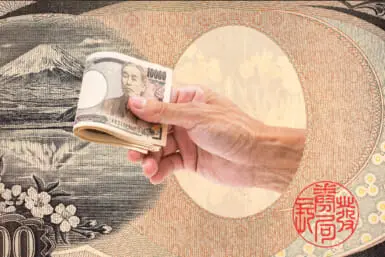Home to vast national parks full of wildlife and mountain ranges, Hokkaido is a top destination for Japan residents who yearn to get reacquainted with nature year-round. If you’re visiting Japan for only a brief period, we recommend you head to the country’s northernmost prefecture in autumn. Between October and early December, the region’s usually verdant forests turn into burning red, orange and yellow hues. For first-time visitors, we recommend going off the beaten track to these four locations for incomparable fall foliage.
Know before you go: Getting around by car is the easiest and smoothest way to explore. Expect unpredictable weather this time of year. Pack a couple of warm jackets and coats as well as comfortable shoes for walking and driving — it may sound like extra effort, but we promise the hours on the road are well worth it.

Lake Shikotsu
1. Lake Shikotsu
Making up one-fifth of Shikotsu-Toya National Park, Lake Shikotsu is about an hour’s drive from central Sapporo. It is the second largest caldera lake in Japan and a product of high volcanic activity in the area. Nearby Mount Tarumae is a popular hiking spot and has trails suitable for beginners. It takes about an hour to reach the crater from the mountain’s seventh station.
Travelers can enjoy the surrounding nature at their own pace. The area has numerous onsen (hot springs) offering a variety of options for bathing. Marukoma Onsen, located near the lake’s northern shore, welcomes daytripping guests looking for a quick (or slow) soak.
Explore the lake itself aboard a boat for a relaxed tour of the area’s fall foliage. Some boats come equipped with unique glass-paneled hulls where passengers can see the fish living in the Lake Shikotsu waters.

Entrance to Noboribetsu’s Oyunum Promenade
2. Noboribetsu
Further south along the coast of Hokkaido, still within the boundaries of Shikotsu-Toya National Park, is Noboribetsu. The city’s best-known sightseeing spot and prime location for fall foliage is Noboribetsu Onsen, more specifically Jigokudani (“Hell Valley” in Japanese).
Noboribetsu Onsen is a rare hot springs region in Japan in that it has not only many baths, but also baths of different varieties — nine, to be exact — all said to have various healing and therapeutic properties.
Jigokudani’s name was inspired by the deep underground thermal sources gushing forth. To further solidify the theme, many statues of oni (ogres) are scattered around town. Stay at one of the inns for a night to give yourself ample time to wander and explore.

Mikuni Pass
3. Mikuni Pass
Japan’s biggest national park, Daisetsuzan, is in eastern Hokkaido. Spread across almost 2,300 square kilometers (approximately the same size as Kanagawa Prefecture), the park is home to many of Japan’s top hiking trails, camping sites and a few notable onsen towns. One of its most spectacular sights is Mikuni Pass, where a section of Route 273 is built 1,139 meters above the ground. The bridge, known as Matsumi Ohashi Bridge, is the highest point of any national highway in Hokkaido.
For the best view of the pass, include a pit stop at the nearby Mikuni Pass Café in your itinerary. Parking is free (albeit limited) and the attached observation deck offers unobstructed views of the forested depths below. The café itself can only fit a few customers at a time, but if some seats at the counter are available, we recommend taking this opportunity to indulge in comfort food like curry, udon with hand-drip coffee — and perhaps even a dessert or two. Additionally, it’s a good opportunity to take advantage of the free WiFi while waiting for your order. Some phones might fall out of range this deep into the national park.
Going on a clear day is ideal, as you’ll be able to see the pass only a few steps from the café. You can also walk for four to five minutes down the road for a more photogenic view.

Daisetsuzan Asashidake Ropeway (Photo via Shutterstock)
4. Daisetsuzan Asahidake Ropeway
Ropeways are another sure way to see fall foliage from a bird’s eye view. Asahidake is Daisetsuzan National Park’s tallest peak and you’ll find a small onsen town at the foot of it. The ropeway is a great way for travelers who are not keen on hiking all the way up to see the stunning views from 1,600 meters above sea level. At the ropeway’s end, travelers can choose to rest before heading back down, or hike another two hours to the top.
Check the status of the ropeway before heading out, as heavy rain, snow or strong winds might cause closures. The ropeway is otherwise fairly accessible without a car thanks to a bus service between Asahidake Onsen and Asahikawa Station.
For more travel inspiration and ideas for your next trip to Hokkaido, like and follow the official Hokkaido Love! Facebook page.
Photos by Anna Petek
Sponsored Post









